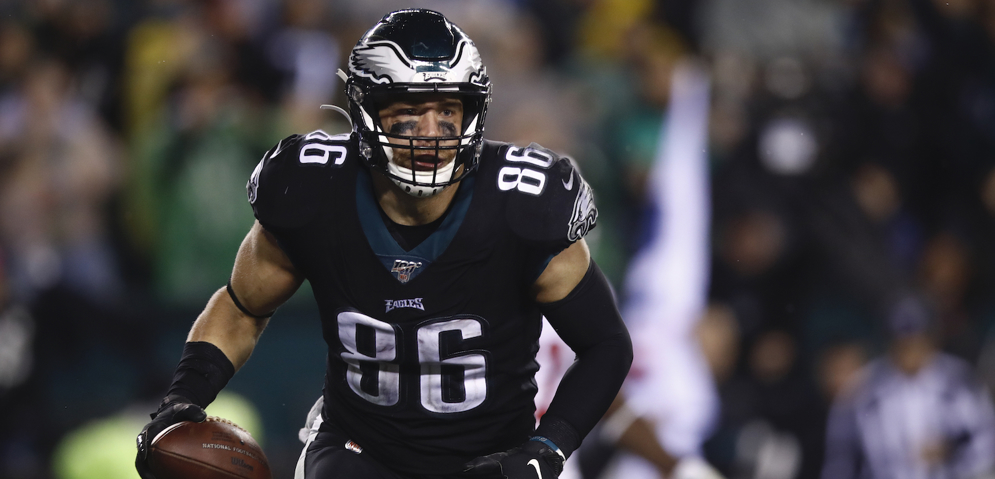The Extra Point Teams Taking More Time Off Play Clock in 10-minute OTs
December 19, 2019

After receiving the ball to start overtime Week 14 against the New York Giants, the Philadelphia Eagles drove down the field and scored a touchdown. The drive was quick — Philadelphia took only eight plays to go 75 yards — however, the Eagles used almost as much of the 10-minute overtime as they could.
Philadelphia’s eight plays took nearly five minutes off the game clock, with the Eagles snapping the ball with seven, nine, five, two, three, one, and five seconds left on the play clock on their last seven plays, all of which took place with a running clock. Over the past decade, fewer than one in 35 touchdown drives of similar length and number of plays have taken so much time off the clock.
Although just one example, Philadelphia’s lack of urgency to start overtime reflects an interesting league-wide trend that seems to have appeared over the last three seasons — since the NFL switched from a 15-minute to a 10-minute overtime period, when teams get the ball to start overtime, they take more time off the play clock.
Here’s a beeswarm plot that shows the amount of time left on the play clock for every regular-season, first-possession overtime play, comparing the 15-minute overtime (2010 – 2016) to the 10-minute session (2017 – Week 14 of 2019). Only plays with a running clock are shown.

With the shorter OT, teams are snapping the ball an average of 2.2 seconds later in the play clock. In the plot, the red dots are slightly shifted to the left relative to the blue dots. For example, 32.5% of plays started with a running clock are started with less than five seconds on the play clock, compared to 17.5% of plays played with a 15-minute overtime.
There are multiple reasons for snapping the ball later in the play clock, but offenses seem to be recognizing that if they take more time off the clock and don’t score a touchdown, they leave their opponent less time to tie or win the game. Interestingly, a related trend has appeared on the very first play of overtime — teams are passing less often. In games played with 15-minute overtimes, the first play of the first possession was a run 38.2% of the time (34 of 89). In games with 10-minute OTs, the first play has been a run 56.8% of the time (21 of 37). This uptick in run plays comes despite the league as whole passing more often on first down in other game situations.